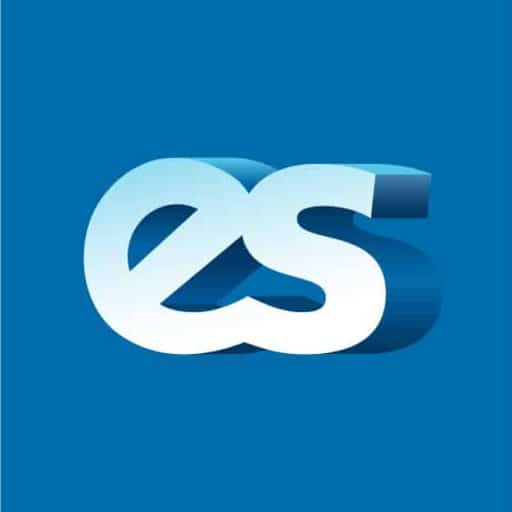Cloud Dancing: Navigating the IT Modernisation Waltz in Highly Regulated Industries
When it comes to embracing IT modernisation in cloud technology, highly regulated industries – such as the financial sector – often find themselves lagging behind. While challenges impact all sectors, these regulated domains face a uniquely complex landscape. Their journey toward modernising IT involves addressing three intertwined challenges:
Outdated Legacy Technology: Many financial services firms operate on systems cobbled together over years, if not decades. This technology debt complicates the adoption of even the lightest new technologies and hinders their ability to meet evolving customer and employee needs.
Cybersecurity Risks: As cyber threats evolve, financial organizations must safeguard sensitive data and transactions. Balancing innovation with robust security measures is crucial.
New Working Styles and Employee Expectations: The rise of hybrid work models demands flexible tools and seamless collaboration. Financial firms must empower employees wherever they are, while also troubleshooting and updating existing systems.
The good news? Regardless of their industry, organizations can address industry disruption, cybersecurity concerns, and compliance by adopting the right approach to IT modernization. And where does this journey begin? In the cloud.
While making the leap all at once might be challenging, there are concrete steps that virtually all organisations can take today to adopt a more dynamic IT posture. By delving into the challenges that hinder their path to modernization, financial services organizations can overcome barriers while staying compliant and thrive in the new world of work.
Challenge #1: Outdated Legacy Technology
Many organisations find themselves navigating a labyrinth of systems pieced together over years, if not decades. This technological patchwork quilt poses challenges when integrating even the lightest of new technologies, all while impeding their ability to keep up with evolving customer and employee demands.
Specifically, highly regulated organisations grapple with several pain points:
- Employee Onboarding and Support: The need for fast and efficient onboarding clashes with outdated systems. Providing tools to hybrid employees—no matter where they are—becomes a logistical puzzle.
- Troubleshooting and Updates: Rather than focusing on high-value activities, tech teams often get bogged down in maintaining existing systems. It’s like trying to renovate a historic building with duct tape and bubblegum.
Halting IT Modernisation: But fear not! Even incremental steps toward IT modernisation can yield significant benefits. By migrating parts of their enterprise to the cloud, organisations can finally embrace microservices, APIs, and DevOps.
Here’s how this shift unlocks potential:
- Business Agility: Cloud adoption allows organisations to swiftly open new locations, consolidate branches, and launch product or service offerings. It’s like giving your business a pair of turbocharged sneakers.
- Reduced Troubleshooting: With legacy systems offloaded to the cloud, IT teams can focus on strategic initiatives rather than firefighting. Imagine fewer late-night debugging sessions and more innovation.
- Cultural Transformation: As technical debt dissipates, organisations can cultivate a culture that attracts and retains top talent. Think of it as a magnetic force field for brilliant minds.
By offloading certain functions to the cloud, organisations can begin to eliminate technical debt caused by legacy systems, while starting to cultivate an organisational culture that attracts and retains talent, too.
Challenge #2: Cybersecurity Risks when considering IT Modernisation
The financial services industry finds itself awash in a sea of data: customer profiles, firm analytics, employee records, and trading histories. This treasure trove of information must be both safeguarded and accessible—like a well-protected vault with a convenient keyhole. Without a robust security infrastructure, organisations risk unwittingly leaking data or becoming the unwitting victims of cyber pirates.
But wait, there’s more! The attack surface has expanded, like a balloon inflated by a mischievous breeze. With the shift to a hybrid work model, employees now log in from their personal devices, creating a digital mosaic of endpoints. Data, like secret messages, must be encrypted as it journeys from its inception point to its final sanctuary. And all this must happen while adhering to compliance regulations—like a tightrope walker balancing business goals and legal constraints.
Enter Zero Trust: Organisations in highly regulated industries must embrace zero trust best practices. Picture a vigilant bouncer at an exclusive club, verifying identities and granting access. Here’s how zero trust can transform the security landscape:
- Data Protection Dance: Sensitive apps and data—whether pirouetting on-premises or pirouetting in public cloud platforms—need protection. Encryption becomes the prima ballerina, twirling gracefully as data travels. Compliance nods approvingly.
- Mobile Device Minuet: Mobile devices, those nimble dancers, must be containerised and wiped clean when necessary. No waltzing with unsecured data! Meanwhile, the sharing and copying of data are restricted, like a stern ballet instructor correcting a misstep.
- Partition Pas de Deux: Protected data pirouettes within its own partition, separate from the rest. It’s like a private dressing room for sensitive information, complete with velvet curtains and a “Do Not Disturb” sign.
Challenge #3: New Working Styles and Employee Expectations
Just because employees may be working from home or on a Hybrid schedule doesn’t mean they have different needs than on-prem employees. Relationship managers, personal bankers, roaming branch staff, and loan agents need to be able to access their applications, information, and data on a single aggregated workspace — whether on their personal device or corporate-owned, personally enabled (COPE) device — without compromising sensitive client or personal information. Meanwhile, customers expect a higher level of security and less friction at all points of service.
The savviest financial services professionals innately understand that they can hedge risk by diversifying and staying flexible. It’s no different for the IT leaders who evaluate and implement practical and intelligent IT strategies. Desktop as a service, or DaaS helps banks provision and manage employee resources in any location more easily. This means they can adapt readily to changing needs and simplify IT operations in the future, making it simple to roll out new products and solutions for employees as well as customers.
Even as workstyles and expectations change, the financial services industry can protect distributed employees, applications, devices, and networks by adopting a more supple, resilient security model.
These IT improvements aren’t just for show. Strengthening data protection, enabling rapid recovery from security incidents, and supporting business continuity reduce risk and increase resiliency. Protecting data everywhere isn’t merely a choice; it’s a grand finale—a standing ovation for responsible stewardship.
IT Modernisation
IT modernisation isn’t a sprint; it’s a marathon through a tech-infused labyrinth. Upgrading enterprise systems and constructing robust infrastructure isn’t pocket change either. But fear not! With a dash of strategy and a crystal ball aimed at the future, IT modernisation becomes a symphony of simplicity, security, and efficiency. Oh, and did I mention cost-effectiveness?
The Not-So-One-and-Done: Picture IT modernisation as a series of well-choreographed dance moves. It’s not a solo act; it’s a tango with legacy systems, a waltz with cloud migration, and a moonwalk toward agility. Each step matters.
The Innovation Equation: Here’s the secret sauce: A mere 1 percent increase in innovation spending pirouettes into a dazzling 1.95 percent boost in overall revenues. Cha-ching! Innovation isn’t just a buzzword; it’s the golden ticket to growth.
Customer-Centric Capers: In today’s market, agility is the superhero cape every firm needs. The villain? Rapid change. But fear not! With IT modernisation, you can leap tall buildings (or at least navigate complex landscapes) while delivering sleek, flexible experiences to both customers and employees. It’s like serving gourmet coffee in a paper cup—practical yet delightful.
So, tighten your shoelaces, adjust your monocle, and embrace the future. IT modernisation isn’t just for tech wizards; it’s for everyone who wants to waltz confidently into the digital dawn
Enterprise Solutions can help organisations provide employees and customers with secure instant access to apps and data on any device, over any network or in any cloud environment, as well as the expertise and agility from a elite in-house team of engineers.

Enterprise Solutions is an award winning trusted advisor for IT solutions and Managed Services, specialising in the End-User Compute space. With over 25 years in business, we’re pleased to say that we have added real business value to our customers in this period. Our aim is to help customers achieve their business goals, but since business goals are ever changing, IT needs to be too; so we assist clients remain as IT agile as they need to be!
User experience is key and we offer workspace solutions to help our clients give their users the work-life balance they crave, using our underlying expertise’s, solutions and services; Citrix, Microsoft and Managed services.




